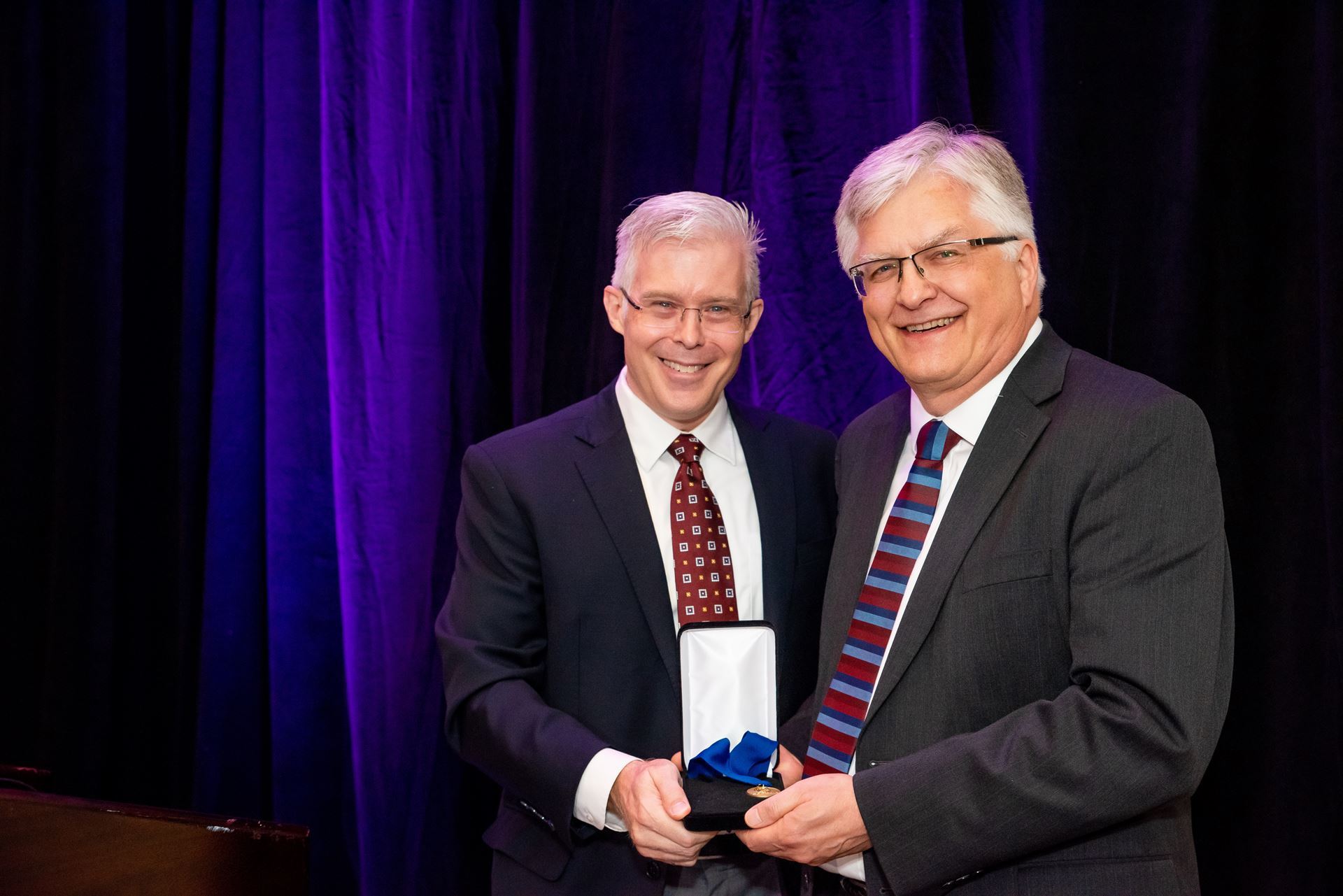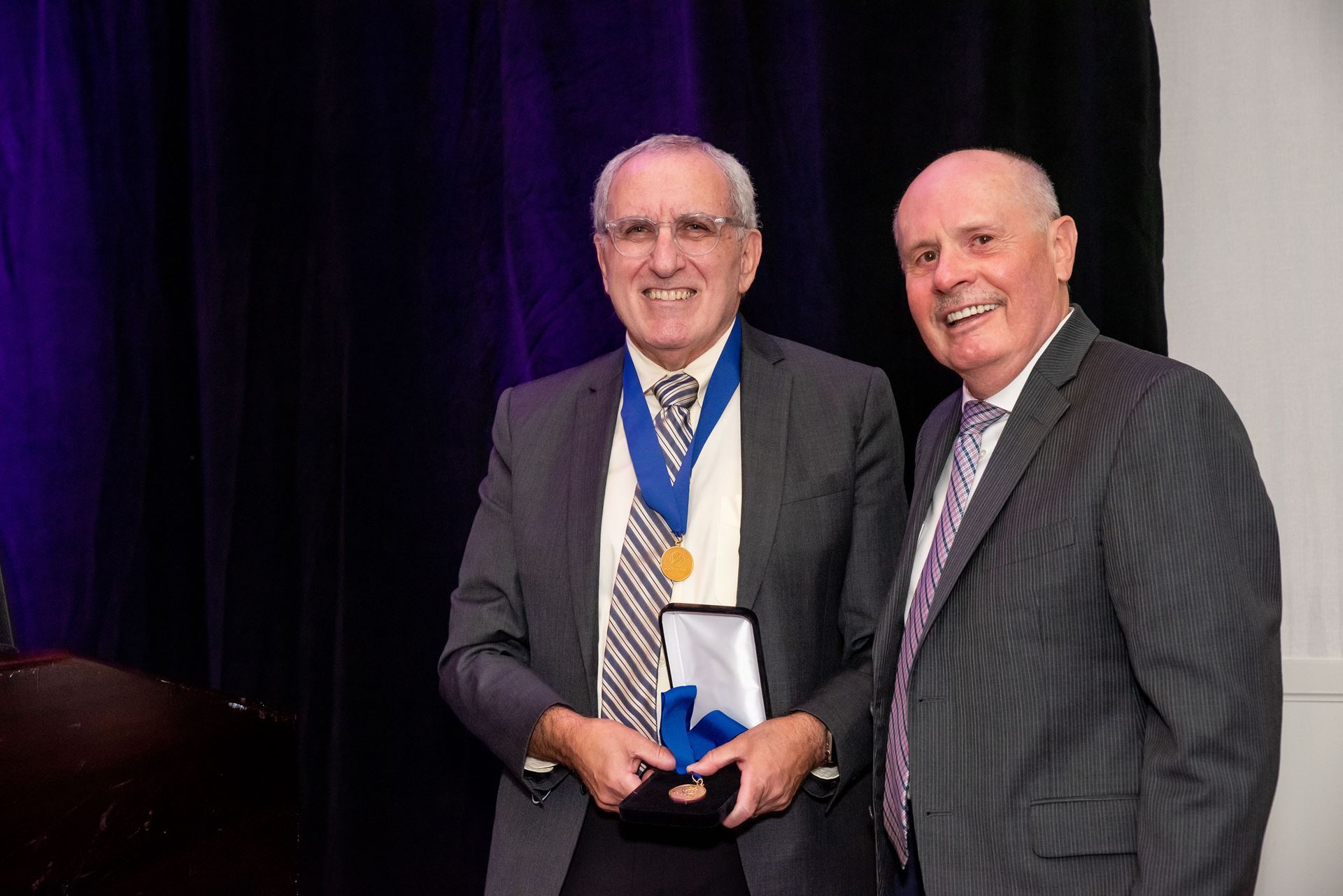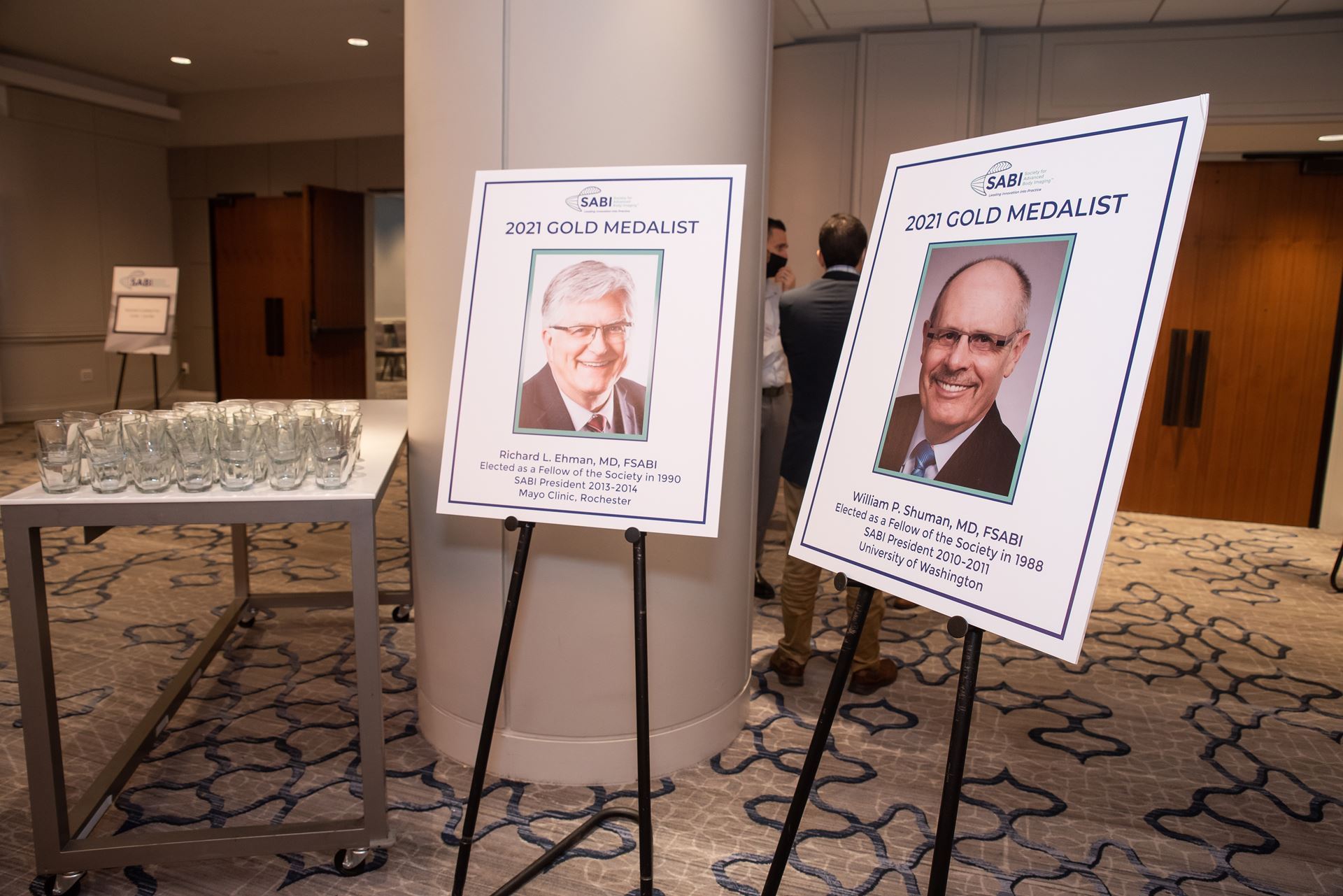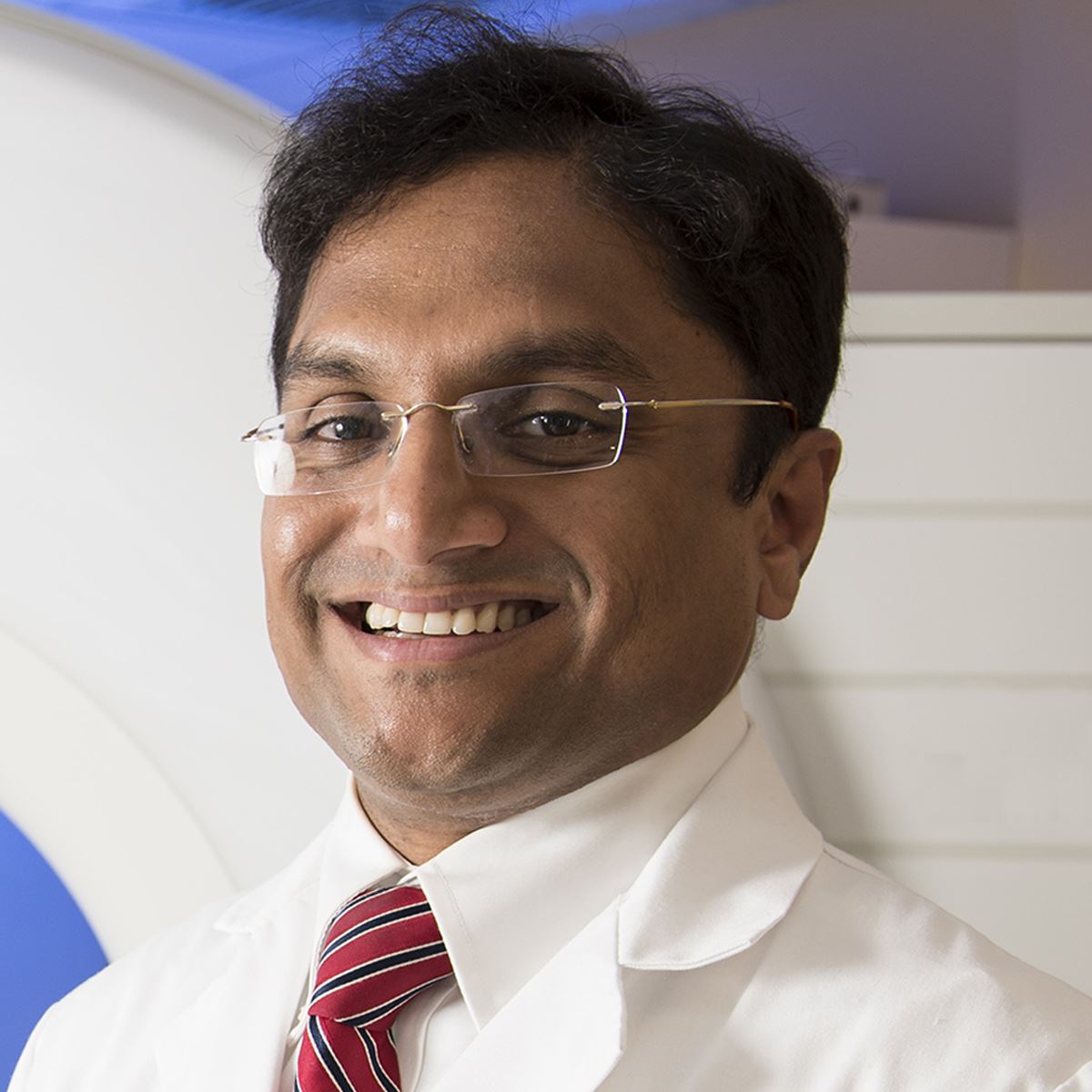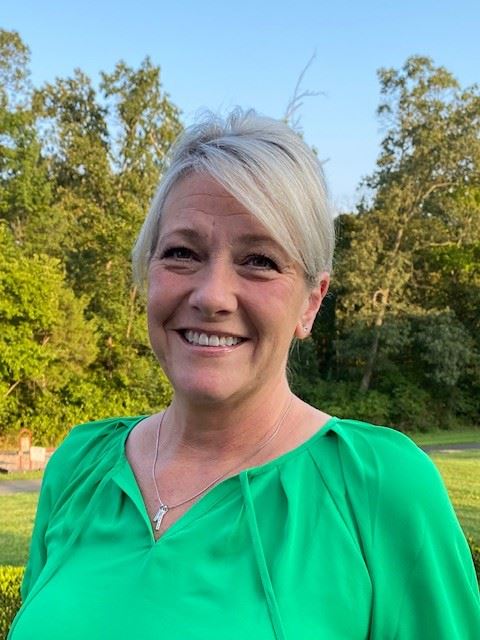
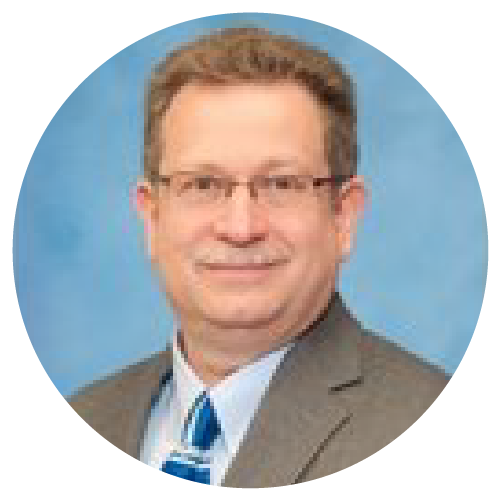 President's Address
President's Address
Joel Platt, MD, FSABI
It is a great honor to humbly address you in my role as the next President of SABI. Given the long list of outstanding leaders and luminaries who have preceded me in this role it is quite easy to feel like somewhat of an imposter. Luckily the President can rely on the help of the Board of Directors, Fellows, and Members of the society making the task far less daunting. There is so much talent in every corner of SABI, with much of it on display at the recent annual meeting in Washington, DC.
As important as the annual meeting is to SABI it is just as crucial that we are more than just a once-a-year meeting group. In this respect some of realties of the pandemic have brought virtual events to the forefront, such as webinars and books clubs, that extend thru the entire year. In addition, our committees meet year long as do interactions with early career members and mentoring sessions so crucial to the society future. At a time when just keeping up with email can be a daunting task how SABI remains relevant yearlong is indeed an important topic for all of us to consider.
Another way SABI can remain relevant and important year-round is thru interaction with JCAT, which is the flagship journal of SABI. JCAT is under the capable leadership of Dr. Eric Tamm and the editorial team he has quickly assembled.
As past society Presidents know and fellows and members are likely aware as well, I did not run to be president, survive a primary process, or have a platform to be elected. Instead, I am custodian of the president role for a year and will try to provide excellent service to this, my favorite society thru my entire career in Radiology. SABI has given far more to my career and contributed far more to my enjoyment of being a Radiologist than I ever could payback, but I will try.
It is common for a new President’s address to provide a meaningful quote from a prolific author or philosopher but sadly I do not have one handy. Perhaps I can quote a modern day somewhat unconventional leader, coach of the New England Patriots football team Bill Belichick, to describe my own approach to this presidential year, “ Do your job “. That job is to help promote, grow, and facilitate participation in SABI to enable even greater relevance in the overcrowded world of scientific societies. I harken back to the Presidential address written by then newly minted President Dr. Gary Gold a few years ago where he challenged the fellows to bring a new person to the annual meeting that year. I would like to reinvigorate and extend that challenge. Whether Board member, past president, fellow, member, or an early career committee participant new to SABI, if you enjoy the society and what it offers you, share that with one person who has not experienced our society and ask them to join and try us for a year. If we all do that job, the society will be in even better position for the future when my presidential year concludes next October.
Outgoing President's Address
Genuine engagement.
That was what SABI 2021 annual meeting in D.C. truly was. As I reflect on my final moments as President at our annual event, I was moved by the incredible turn out of those who came as presenters, audience, and vendors. A few highlights stand out that illustrate the energy and connection of SABI.
As always, the sessions of science, tumor boards and wellness talks were outstanding and thoughtful. I walked into a workshop given by Dr. Victoria Chernyak, who gave an inspiring vision of the current and future efforts of Li-Rads, with her mentor Dr. Claude Sirlin piping in with support. It was emblematic of the growth of faculty who go on to succeed at high levels guided by the mentorship of SABI.
And then of course to see the reunion of the friendships at all levels was heartwarming. I remember Ghaneh Fananapazir saying to me he got back his “six pack” of his abdominal muscles after laughing so much with friends the night before.
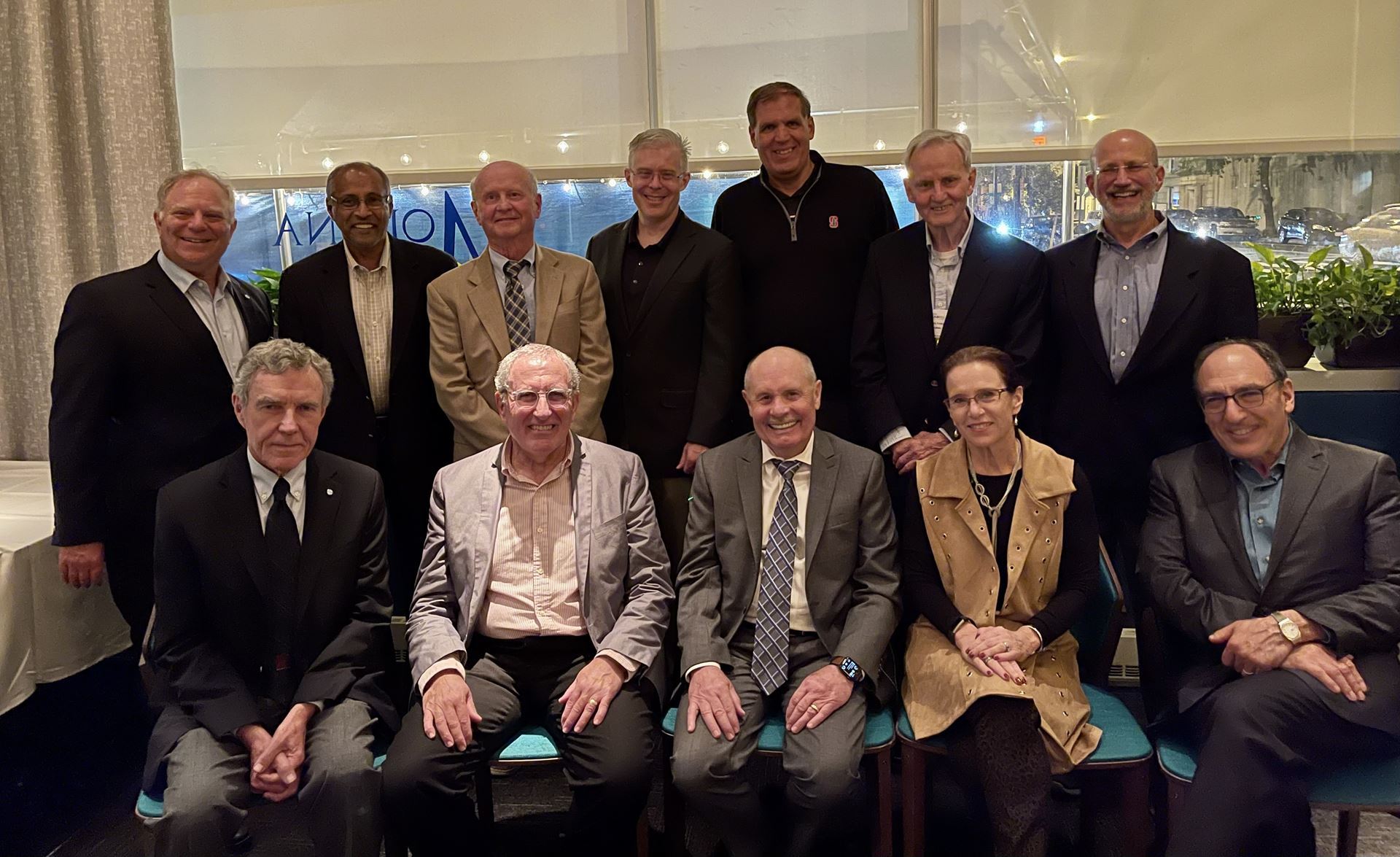 It was such a privilege to introduce Dr. Bruce Rosen, one of my former mentors, to give the Presidential lecture of cutting-edge insights in functional neuro imaging, with lessons to be learned for young and mid-career faculty. I heard Bhavik Patel thank Bruce after his talk for giving him the perseverance to resubmit a grant effort. The Monday Gold Medal and Research Awards dinner was another highlight where it was such a privilege to honor Dr. Bill Shuman and Dr. Richard Ehman for their lifetime achievements, along with all the excellent research award winners. To see almost a third of a packed dining hall stand up when I asked for prior Gold Medalists, Chairmen, Section Chiefs and Vice Chairs of Research to rise vividly demonstrated the depth of the leadership SABI has.
It was such a privilege to introduce Dr. Bruce Rosen, one of my former mentors, to give the Presidential lecture of cutting-edge insights in functional neuro imaging, with lessons to be learned for young and mid-career faculty. I heard Bhavik Patel thank Bruce after his talk for giving him the perseverance to resubmit a grant effort. The Monday Gold Medal and Research Awards dinner was another highlight where it was such a privilege to honor Dr. Bill Shuman and Dr. Richard Ehman for their lifetime achievements, along with all the excellent research award winners. To see almost a third of a packed dining hall stand up when I asked for prior Gold Medalists, Chairmen, Section Chiefs and Vice Chairs of Research to rise vividly demonstrated the depth of the leadership SABI has.
We also brought together for the first time the Past Presidents who had a wonderful Italian dinner nearby on Tuesday night. Neil Rofsky and Bill Shuman helped to inspire and organize this outreach. I do think the reconnection of the Past Presidents will start a new era of energy and momentum that will enrich the future of SABI.
Although there was great sentiment to rotate off the Board Past President Dr. Scott Reeder and Member at Large Dr. Aarti Sekhar after their transformative efforts, there was a warm welcome to Dr. Matt Davenport as the next Board member along with Dr. Jessica Robbins as Member at Large (lose a Badger, gain a Badger).
As Immediate Past President to SABI, I know we are in great hands with Dr. Joel Platt taking over as President, after such outstanding efforts as Program Chair at our annual meeting. His right-hand man, Dr. Brian Herts will now lead the way as Program Chair for New Orleans in 2022, so hold on for further creativity and innovation. And of course, we could not have pulled this off without the tireless efforts of SABI administration, Michele Wittling, Jen Sheehan, Jen Leeper and Stephanie Hige (congrats on her new baby!).
I wish you all a healthy new year. May 2022 be a year of continued energy and optimism in your balance of work, health, family, and friends.
Sincerely,
Beth McFarland, MD, FSABI
Congratulations 2021 Gold Medalists! |
Dr. Reeder presents a Gold Medal to Read More About Dr. Ehman |
Dr. Berland presents a Gold Medal to Read More About Dr. Shuman |
|
|
Through the tireless efforts of the Program and Research committees and the skillful support of the SABI Staff, we were able to gather safely and enthusiastically for 4 and ½ days in October in Washington DC for our Annual Meeting. We enjoyed numerous plenaries, more than 30 workshops, panels, roundtables, and several vendor sessions. We welcomed a new fellow to SABI, Dr. Prabhakar Rajiah and celebrated two new Gold Medalists, Dr. Richard L. Ehman and Dr. William P. Shuman. We also continued the strong presence of science at our meeting, both from younger members in the traditional science sessions organized by Dr. Olga Brook and Dr. Mishal Mendiratta-Lala, and more experienced science faculty in our new Vanguards of Science session organized by Dr. Brian Herts. We did a deep dive into AI in sessions organized by Dr. Bhavik Patel and had two tumor board-like sessions, one focused on HPB imaging and the other on prostate cancer. The Presidential Lecture was delivered by Dr. Bruce Rosen which provided insight and inspiration relating to key SABI principles of science and innovation. The overall program description might seem like our usual outstanding annual gathering, but this year was anything from “usual”. The Fellows and SABI Members who would have liked to contribute and participate but were unable to, were greatly missed. The palpable energy was unforgettable, people gathering and chatting about what they enjoyed most about their SABI experience. Dr. Brian Herts is already hard at work with his Program and Research committees planning SABI 2022 being held in New Orleans, October 22-26. Joel Platt, MD, FSABI |
View JCAT's Current Table of Contents Best SABI Authored JCAT Publication in 2020 We were very proud to present, at the awards ceremony of the SABI Annual meeting, the winner for the Best SABI Authored JCAT Publication in 2020 as chosen by our Associate Editors: Preparing and Promoting Women for Leadership Positions in Radiology and the Imaging Industry: Rofsky NM, Meltzer C, Chertoff JD, Gilbreath R, and Canon CL. Associate Editors, in the next few months, will be looking at candidates for the 2021 award. To be eligible for future awards, remember, at the time of submitting your work to JCAT, to answer “yes” to the question regarding being a SABI member (and you must, at the time of submission, and throughout the remainder of the year, be a member in good standing of SABI to make sure you are accurately identified as a SABI member when we check author lists against the SABI member roster). JCAT at the Annual SABI Meeting Our editorial team was excited to participate in this great in person event, probably the first in person major radiology meeting since the beginning of the pandemic. We held a great JCAT Editors’ meeting for those attending the event, hosted a roundtable for those interested in becoming involved in journals called “Writing, reviewing, editing and more, becoming involved in radiology journals,” and Dr. Tamm, the JCAT Editor-in-Chief hosted for a third year a workshop with Dr. Dunnick, Editor-in-Chief of Academic Radiology, called “Meet the Editors.” Call for Articles from SABI’s Annual Meeting’s Presenters (Scientific and Educational) We invite all those who presented scientific and educational presentations and exhibits to submit their work to SABI, whether it is original science, or review articles, for consideration by JCAT. Just remember to answer “yes” to the question regarding being a SABI member, and to indicate in your cover letter that you presented at the annual meeting. Hot Topics We recently held our annual Editorial Board meeting and identified the following “hot topic” areas:
All submissions will be subject to blinded peer review, must score sufficiently well with reviewers and the Associate Editor to be published, and will be on a “first come” basis, i.e., if a topic has already been covered sufficiently by an earlier submission(s), we will need to decline later submissions on that topic. If you have a question on a topic, please feel free to reach out to Dr. Tamm at eprad76@hotmail.com. Becoming a Reviewer for JCAT If you are interested in being a reviewer, please send a copy of your CV to Eric Tamm, M.D., Editor-in-Chief, JCAT (eprad76@hotmail.com) along with information regarding your areas of interest/expertise. SABI Members receive a significant discount on annual digital access to JCAT. Accessing JCAT Support your Society journal and get access to what you need to read! Check if you have access to JCAT through your institution. If not, ask your institution’s library to get access. If you are not part of an institution, you can subscribe HERE to JCAT at a reduced rate. | JCAT Articles Authored by SABI Members & Fellows Note: The following articles are those in which the submitting author indicated at submission that one or more authors were SABI members/fellows and SABI staff confirmed active membership. Virtual non-contrast images from portal venous phase spectral-detector CT acquisitions for adrenal lesion characterization, by Kai Roman Laukamp, MD; Rivka Kessner, MD; Sandra Halliburton, PhD; David Zopfs, MD; Amit Gupta, MD; Nils Große Hokamp, MD, Jan/Feb 2021 Improvement of radiation dose outliers through systematic analysis, CT technologist education and standardized system solutions, by Elisabeth Appel, M.D.; Johannes Boos, Dr.; Jieming Fang, MD; Da Zhang, PhD; Carol Wilcox; Andrés Camacho, MD; Sujithraj Dommaraju, MD; Alexander Brook; Olga R Brook, MD, Jan/Feb Crohn’s Disease Prognostication with Semiautomatic Dual-Energy CT Enterography Derived Iodine Density, by Bari Dane, MD; Ahmad Garada, MD; Thomas O'Donnell, MD; Shannon Chang, MD; Alec Megibow, MD, Mar/Apr Impact of the number of cores on the prostate cancer detection rate in men undergoing in-bore MRI-guided targeted biopsies, by Naveen Subramanian, BA; Debora Z Recchimuzzi, MD; Yin Xi, PhD; Alberto Diaz de Leon, MD; Heng Chen, BS; Donglu Xie, MS; Kenneth Goldberg, MD; Neil M Rofsky, MD; Ivan Pedrosa, MD, PhD; Daniel Nobrega Costa, MD, Mar/Apr Optimizing identification of power injectable ports on the scout images for MDCT procedures, by Fides Regina Schwartz, MD; Kevin Scott Iliffe, BSRT; Andrew Somers, RN; Brittney Stone, BSRT; Tracy Jaffe, MD; Justin Solomon, PhD; Lynne Hurwitz-Koweek, MD, May/Jun Prediction of Patient Height and Weight with a 3D Camera, by Bari Dane, MD; Vivek Singh, MD; Matthew Nazarian; Thomas O'Donnell, MD; Shu Liu, MD; Ankur Kapoor, MD; Alec Megibow, MD, May/Jun Clinical, Radiographic, Pathologic Characterization and Survival Outcome of NUT Carcinomas, by Mayur Kundan Virarkar, MD; Marcelle Mallery, MD; Mohammed Saleh, MD; Nisha Ramani, MD; Ajaykumar Morani, MD; Priya Bhosale, MD, May/Jun Current Status of Radiomics and Deep Learning in Liver Imaging, by Linda C Chu, M.D.; Seyoun Park; Satomi Kawamoto; Alan Yuille; Ralph Hruban; Elliot Fishman, May/Jun Clinical Importance of Incidentally Detected Hyper-Enhancing Liver Observations on Portal, by Michael Corwin, M.D.; Ryan T. Digeronimo, M.D.; Shannon M. Navarro, M.D.; Ghaneh Fananapazir, M.D.; Machelle Wilson, Ph.D.; Thomas W. Loehfelm, M.D., PhD, Jul/Aug Collaborative Writing Projects: Set yourself up for success, by Tara Marie Catanzano, MD; Jessica Robbins; Fides Schwartz; Rajiah Prabhakar; Sherry Wang; Sadhna Nandwana; Erik Soloff; Les Folio, MD, Jul/Aug Osseous Tumor Reporting and Data System (OT-RADS) Guidelines and Multi-Reader Validation Study, by Avneesh Chhabra, M.D.; Anurag Gupta, B.S.E.; Uma Thakur, M.D.; Parham Pezeshk, M.D.; Nathan Dettori, M.D.; Alexandra Callan, M.D.; Yin Xi, Ph.D.; Paul Weatherall, MD, Jul/Aug Initial experience with Ultra-low-dose FDG PET/MR Imaging with Deep-Learning Enhancement, by Christian J Park, DO; Weijie Chen, MS; Ali Pirasteh, MD; David H Kim, MD; Scott B Perlman, MD; Jessica B Robbins, MD; Alan B McMillan, PhD, Jul/Aug Feasibility of Abdominal MRI in Patients with Residual Concentrated Enteric Contrast after Fluoroscopic Abdominal Examination, by Bari Dane, MD; Nicole Hindman, MD, Sep/Oct Prevalence of Malignancy on Contrast-Enhanced CT of the Abdomen and Pelvis in Patients with Unexplained, Unintentional Weight Loss, by Dylan Noblett, MD; Austin Kwong, MD; Michael T Corwin, MD; Ghaneh Fananapazir, MD, Sep/Oct Prevalence of Breast Cancer in Female Physicians Performing Procedures with Significant Fluoroscopy Exposure – Survey, by Bianca Biglione, BS, BA; Masoud Nakhaei, MD; Barbara Hamilton, MD; Meridith J. Englander, MD; Anahita Dua, MD; Olga R. Brook, MD, Sep/Oct Accuracy of Dual-Energy CT Techniques for Fat Quantification in Comparison with MR Proton Density Fat Fraction and Single-Energy CT in an Anthropomorphic Phantom Environment, by Zi Jun Wu, MD; Daniel S Hippe, MS; David A Zamora, MS; Noah E Briller, RT; Kathan A Amin, MD; Orpheus Kolokythas, MD; Achille Mileto, MD, Nov/Dec |
Avinash Kambadakone, MD, DNB, FSABI Chief, Abdominal Radiology Division Associate Professor, Harvard Medical School Medical Director, Martha's Vineyard Hospital Imaging Avinash Kambadakone, MD, DNB, FSABI joined SABI as a member-in-training in 2008. He has been an active member since 2012 and currently serves on the Scientific Research Committee as well as the Program Committee. Dr. Kambadakone’s first award for a research presentation was at SCBT-MR 2008 where he received the Cum Laude Award for his presentation titled “Subtraction CT enables better characterization of renal masses.” Additionally, he was a co-author an abstract that received the Cum Laude Award. His other awards include the Cum Laude Award (2010), the Hounsfield Award (co-author, 2017), the Cum Laude Award (co-author, 2018) and the Magna Cum Laude Award (co-author, 2018). Dr. Kambadakone says despite the difficulty during COVID, and he was blessed to be part of an incredibly resilient team at Massachusetts General Hospital, which helped him cope with the pandemic. The camaraderie of his team and friendships were crucial to navigate during these unprecedented challenging times. “The people at SABI are my favorite. As a SABI member, the friendships, and relationships I have built are the most memorable. SABI Annual Meetings provide a terrific learning experience. It is exciting to learn and share cutting-edge innovations and their applications in clinical practice from experts in the field. SABI offers trainees and young faculty an exclusive opportunity to interact with innovators and leaders up close, which is impossible at any other conference. The mentorship opportunities are outstanding. Regular attendance at this meeting is a must for any imager, academic, or those in private practice who is keen on being abreast of the recent imaging innovations and their impact on patient care.” Dr. Kambadakone's clinical interest areas are: liver, pancreas, gastrointestinal tract and DECT. His research investigates the clinical applications of cutting-edge CT innovations in abdominal imaging which have led to three areas of clinical innovations:
He says that providing mentorship and guidance is an effective way to develop research and encourage radiologists in their earlier careers to pursue. A structured program is important to foster research at SABI. Dr. Kambadakone motivates younger generations through recognition and appreciation of their efforts. Inspiring them through research opportunities and projects as well as the encouragement to present at scientific meetings and write manuscripts. He believes the most important mantra for success is discipline. “While motivation is important, discipline helps execute ideas. An effective mentor is needed to ensure that younger trainees and faculty understand the importance of perseverance”. |
|
Changing the Storyline Radiologists can rewrite the existing narrative on health disparities by reaching out to underserved communities about the lifesaving benefits of CTC. As the third most common and second deadliest cancer in the U.S., colorectal cancer (CRC) remains one of the most preventable cancers by appropriate screening.1 Because CRC starts from an adenomatous polyp that develops over a period of years into a cancer, this extended timeframe provides an ideal window of opportunity for detection, removal, and prevention. Despite this, nearly one-third of eligible candidates remain unscreened.2 As the recommended age to start CRC screening has been lowered to age 45, that percentage may increase.3 As unfortunate as these numbers are, they’re even worse when we zoom in on minorities in the U.S. For example, the incidence of CRC in Black Americans is 20% higher than White Americans, and the mortality rate from CRC is 40% higher.4 CRC is 40% more common in those with a lower socioeconomic status than those of a higher socioeconomic status. Forty-four percent of this racial healthcare disparity is attributed to differences in screening rates, according to the American Cancer Society.5 This is one healthcare disparity that radiologists can work to improve through promoting increased uptake of CRC screening within minority communities. The most prevalent CRC screening method currently in use is called optical colonoscopy (OC). Although OC is the most well-known CRC screening exam, it presents significant challenges for uptake among minority groups. For instance, the use of anesthesia requires a driver post-procedure. Undergoing OC also often requires patients to take a day off from work, which can be a challenge for those in underserved populations. The anesthesia involved with OC also evokes fear in some cultural and ethnic minority groups.6 Furthermore, access to OC continues to be limited by the number of available gastroenterologists to perform the exam and the lower number of gastroenterologist practices in locations convenient for minority screening candidates.7 By comparison, although less widely used than OC, CT colonography (CTC) presents fewer barriers to adoption in underserved communities. Despite the recommendations of the U.S. Preventive Services Task Force (USPSTF) to make CTC screening widely available to all eligible screening candidates, CMS does not currently reimburse for screening CTC unless the patient meets very specific criteria.8 In practice, however, this “one-size-fits-all” approach does not facilitate access to minority screening candidates and contributes to the healthcare disparities we are trying to overcome in the medical community. Although CTC still requires bowel prep, CTC helps overcome many barriers to resistance. First, CTC does not require anesthesia. Second, the procedure takes approximately 20 minutes to perform, and screening candidates can resume normal activities or work immediately afterwards. Plus, CT scanners are widely available to a variety of patients regardless of zip code. For these reasons, CTC has been shown to increase screening percentages for some groups who are offered this option.6–8 Establishing a CTC program to optimize access has realistic potential to impact both CRC incidence and mortality disparities. Optimizing the EHR One tool that radiologists can enlist in their effort to improve access to CRC screening is the EHR system. Results from a 2017 survey indicated that 99% of hospitals and healthcare systems use EHRs.9 Many EHR systems can be programmed to identify patients who have not been screened for colon cancer when they present to a healthcare provider. Once identified, communication tools can educate and encourage minority screening candidates to schedule CRC screening via CTC. Similarly, patient letters, email, or electronic patient portal messages have been used with some success in reaching minority breast cancer screening candidates.10 Building on this success, many healthcare systems are now consolidating these communication channels into centralized systems for health maintenance. The use of automated reminders to “nudge” physicians to order timely CRC screening for minority candidates has been shown to decrease the bias previously seen as a disparity in physician ordering practices.11 Radiologists can play a vital role in decreasing health disparities by extending access to CTC for minorities.
Also in line with breast and lung cancer screening programs, CTC makes use of evidence-based dedicated screening intervals and standardized follow-up strategies when it comes to handling abnormal results. Utilizing either established health maintenance modules or working with IT departments to build similar workflows to identify and contact unscreened candidates is possible with a modicum of effort.12 One major advantage of enlisting the EHR in these communications efforts is that if the proper permissions can be approved, the primary care provider (PCP) does not need to activate the screening visit. It is, however, always important to keep the PCP informed of findings and next actions. A recent article indicated that high patient satisfaction scores can be achieved by healthcare systems with automated navigation of patients for preventive oncology screening as opposed to direct involvement of a patient’s frequently over-taxed PCPs.13 Involving Patient Navigators Although the EHR is an important tool in identifying eligible minority CRC screening candidates, its value can be accentuated when used in tandem with nurses, medical assistants, or even community health volunteers — also known as healthcare navigators — who bring a human element to shoring up healthcare disparities. For example, navigators can increase CRC screening uptake among underserved communities by calling unscreened candidates to schedule initial screens. This same approach can work for contacting patients to schedule follow-up appointments for abnormal screening results. Follow-up of abnormal results is another key step to decreasing CRC mortality. Multiple studies have demonstrated success in achieving higher screening rates among minorities with the use of navigators. Surveys indicate that patients are satisfied, are better informed on expectations for follow-up visits, and have increased compliance with follow-up instructions.14 Several studies involving cancer screening have shown that employing patient navigators is an effective way to reduce the number of missed care opportunities and improve patient compliance with both initial screenings and follow-up care.15–17 Although navigators can prove relatively expensive, implementing a strategy to target candidates with higher rates of missed care opportunities can result in cost-effective savings for health systems focused on achieving a healthier population of “covered lives.”18 Beyond enlisting the help of navigators in the clinical setting, the use of community health volunteers as navigators may provide an additional opportunity to address the cultural fears and obstacles unique to specific minority populations. Barriers to CRC screening for minorities have included affected groups being less informed about options and lacking trust in healthcare systems in light of past injustices, such as the Tuskegee Study of untreated syphilis and the forced sterilization of Black patients.19–25 Community navigators may have already established trust with patients within their own communities and can prove vital to extending a CRC screening program’s reach.26 Despite having made great inroads, CTC is still not a widely used alternative for CRC screening. While this can be seen as suboptimal, it also presents an opportunity. Social media announcements, radio spots, church events, and other communication avenues can be used to educate both providers and minority communities about this option for CRC screening. In addition, the ACR offers an online locator tool (bit.ly/CTCFind) to help providers and patients find a nearby site offering CTC. Radiologists can play a vital role in decreasing health disparities by extending access to CTC for minorities. As radiologists, most of us want to help ensure quality care across the board but have found it challenging to do so given that we don’t often interface directly with patients. This is one way to rewrite the script we’ve been given and help those most in need. ENDNOTES
Author By Cecelia C. Brewington, MD, FACR, member of the ACR Colon Cancer Committee and professor of radiology and vice chair of operations in the department of radiology at UT Southwestern Medical Center in Dallas |
Improving Access RAD-AID International and the ACR are partnering to eliminate social and structural barriers that lead to health disparities in underserved communities. RAD-AID has partnered with ACR on many initiatives throughout its 13-year history, including support for RAD-AID’s annual global health radiology conference, collaborations in Haiti and Nepal, projects for radiology residents at RAD-AID’s international sites, and the recent collaborative distribution of ACR’s BI-RADS® Atlas to RAD-AID’s partner low-resource breast imaging centers in low- and middle-income countries. When RAD-AID launched the Women’s Health Access Program in the U.S. in 2020, Ian A. Weissman, DO, FACR, chair of the ACR Commission on Patient- and Family-Centered Care (PFCC) Outreach Committee and president-elect of the Wisconsin Radiological Society, reached out to inquire about a potential collaboration between the two groups — as they share similar objectives of reducing healthcare disparities among people of color in the U.S. Patient communication and navigation are essential factors in addressing morbidity and mortality from breast and cervical cancers. One of RAD-AID’s key strategies for capacity-building in underserved areas is to bridge patient navigation, education, and equipment resources. Navigation means directly helping patients to understand care options and find care providers to optimize access, follow-up, and care delivery. Navigation also addresses key social determinants of health, which are integral to health disparities. One way to improve patient access is to advance patient satisfaction and the diversity of providers. Addressing Disparities The RAD-AID USA Women’s Health Access Program, in partnership with Hologic, the Black Women’s Health Imperative, and the ACR PFCC Outreach Committee, seeks to combat existing health disparities. John R. Scheel, MD, MPH, PhD, a breast imaging radiologist at the University of Washington (UW) and director of the RAD-AID USA Women’s Health Access Program, leads this effort, along with Mary W. Wetherall, RN, director of nursing, and Olive Peart, MS, RT(R)(M), program manager of mammography technologists. The initiative will deliver multidisciplinary healthcare to underserved communities. Areas of focus include public outreach, nursing and community navigation, breast and cervical cancer screening, and other medical services for people of color, says Scheel. Sites will be located in cities such as Washington, D.C., Seattle, Denver, Phoenix, Chicago, Philadelphia, and New York, as well as more rural regions of Georgia and Alabama. Partnerships among diverse individuals are necessary to eliminate health disparities, notes Scheel. “By including participants with different backgrounds, we’ll be able to identify gaps in our own knowledge and strategy,” he says. “One of the reasons I think we’ll be successful is that we’re involving patient populations, providers, nurses, RTs, and other patient- and back-facing staff across the continuum of care. We need everyone.” This approach is one of the reasons the ACR PFCC Outreach Committee is excited about the collaboration. “Our committee members bring their areas of expertise and unique life experiences to this initiative,” says Weissman. “We aim to use our different talents to combat health disparities.”
Creating Effective Communication Patient communication is a central component of the project, says Scheel. “One of the big things we’re working on is developing communication, education, and results letters for mammography, as well as appointment reminders,” he says. For these communications to be successful in modifying health behavior, he says, they need to be culturally appropriate and written using words that people of all levels of education and fluency in English can understand. As was necessary for the UW project, outreach needs to incorporate diverse viewpoints and beliefs — as well as the misinformation that already exists in communities. “Many patients we’ve spoken to believe that if breast cancer doesn’t run in their family, they don’t need to worry about it — or they only need one mammogram over the course of their lifetime,” says Scheel. RAD-AID volunteer, Christine B. Ormsby, MD, leads the patient communication work group and is assisted by RAD-AID and PFCC Outreach Committee members. “Outreach will also need to be educationally appropriate,” explains Weissman. “Most medical communication is written at a 12th-grade reading level, although it should be targeted more toward a third-grade level for increased comprehension. One of our goals will be figuring out how to clarify the language in the radiology reports to empower patients to more fully participate in their care.” The ACR PFCC Outreach Committee will not only be working on communication, says Weissman. “A lot of the committee members actually reside in areas where RAD-AID International is setting up program sites,” he says, “so we’ll be on the ground working with the patients.” Producing Results Improving communication and access to underserved communities are only two of the initiative’s many goals. Ultimately, its overarching aim is to address health inequity by providing a model that can be used to address other health problems. “We want to serve as an example that promotes policy change,” says Scheel. “To really improve population health, we need to show a cost-effective solution such as ours exists.” Weissman agrees. “Patients can only advocate for themselves so much,” he says. “Our goal is to remove the obstacles in their way toward the end result of improving their care. Systemic change is also key to improving outcomes and equity in healthcare. We’re confident the RAD-AID USA Women’s Health Access Program will be a part of that change by demonstrating tangible results in these underserved communities.” Developing the Strategy This program is founded on the premise that global health includes local community health. By addressing the upstream sources of health disparities, such as systemic racism and education, RAD-AID USA hopes to include people previously excluded from the healthcare system and, thus, improve population health. This means that RAD-AID’s work applies not just to the low- and middle-income countries, but also to communities in high-income countries that face critical barriers to health equity. Early in Scheel’s career at UW and the Fred Hutchinson Cancer Research Center, he worked on the ¡Fortaleza Latina! program. This program used a multi-level intervention that included patient promoters/navigators at primary care centers and a mammography van to improve breast cancer screening rates in Seattle’s underserved Latinx population. When the van was sent out into the community, program leaders noticed many Latinx patients were reluctant to use these mammography services. He worked with a team to determine why the project was not as initially successful as they had hoped. They discovered many people in the community believed that because the mammography machines were mobile, they were not as high-quality as machines at a hospital. “We assumed addressing awareness, transportation, and cost would fix access issues and increase participation in screening,” explains Scheel. “However, we also needed to provide culturally-appropriate communication, specific to mobile mammovans, so the community understood that the screening exams and radiologists interpreting their exams were of the same quality as what they would receive at our fixed sites.” Misinformation like this is just one reason that underserved populations experience deep inequities in healthcare. Black patients in particular experience higher death rates from breast and cervical cancers, despite having nearly identical incidence rates to White patients. These patients are often screened at lower-resourced and non-accredited facilities and experience longer intervals between mammograms — as well as between abnormal results and follow-ups.1 The collaboration between RAD-AID USA and the ACR aims to address these education and communication gaps. ENDNOTES
Author |
The Exceptionalism of Radiology
As the ACR develops its new strategic plan, it is guiding the specialty and the broader community to work together to realize radiology's potential.
Benjamin S. Bloom, a professor of educational psychology at the University of Chicago, published a landmark book in 1985, Developing Talent in Young People.1 According to Bloom, all the superb performers he investigated practiced intensively, studied with devoted teachers, and were supported enthusiastically by their families throughout their developing years. Later research building on Bloom’s pioneering study revealed that the amount and quality of practice were key factors in the level of expertise people achieved. Consistently and overwhelmingly, the evidence showed that experts are made, not born.
Many others claim to be experts in the skills that radiologists provide. There have been continuous attempts to commoditize medical imaging and discount the value of radiologists. Yet it is radiology and radiologists that remain exceptional in our commitment and devotion not only to the realized benefits of medical imaging today but to innovation and the promise of its impact on patients and future population medical management.
At times, we may be myopic in realizing the exceptionalism of our chosen profession. We focus on potential threats and commoditization of what we deliver to our patients and referring physicians. No doubt these are important concerns for us to identify and address, especially during our strategic plan development process. Yet, if we step back and look at the macro-environment, it is undeniable that radiology is in an incredible position. Imaging-based care is at the forefront of modern medicine. We are just at the infancy of detecting the information hidden in our digital data. Metabolic and functional imaging techniques are emerging and will be fundamental to how we consider diagnosis and therapeutic options. With emerging modern techniques such as AI, the integration with pathology, and population and personalized health management, the potential is limitless.
So many entities, including big tech, are looking at medical imaging and what we do — for very good reason. Healthcare has always been an attractive industry. Radiology is in an advantageous position to deliver essential data and micro-interventions for future healthcare paradigms. Embedded in our training and orientation are both short-term and longer-trajectory opportunities to utilize medical data and informatics. Imaging and data are going to be key for the objective assessment and planning of medical care, in whatever future payment systems develop.
As a science, the future is ours to realize. Radiologists are advancing the applications, science, and innovations of imaging, therapy, and interventions. We can reduce costs. We can take a leading role in population health management. As our predictive modeling evolves and matures, we can tell an individual what their risk factors are and guide them through a personalized medical care plan.
Radiology is in an advantageous position to deliver essential data and micro-interventions for future healthcare paradigms.
As a profession, we continue to attract the best and brightest. A brief glimpse at our literature will uncover the innovations that continue to evolve in our space. While some pundits had transiently focused on the potential negative impact of AI on our specialty, most population health management experts understand that imaging and informatics can shift healthcare paradigms to deliver better evidence-based care with greater efficiency and more value.
Exceptionalism does not end at our shores. The international interest and excitement in our specialty is inspiring. Working with international partners, radiologists are raising the profile and awareness of medical imaging — especially in countries where resources are scarce. We are learning best practices as medical imaging is being applied in multiple national delivery systems with various populations and demographics. As medical imaging is being primarily recognized in delivering even basic healthcare needs, we have the opportunity — if not the obligation — to impact global health. This is truly an exceptional time to be a radiologist.
Radiology continues to be an incredible profession — providing societal value, professional satisfaction, and intellectual curiosity. Our specialty is witnessing the explosion of technology and science amidst the promise of our future.
As I speak with residents and fellows across the country, I congratulate them for choosing radiology as a specialty. Despite all the distractions, they are entering the specialty at an exciting time. Yes, there will continue to be challenges. In an earlier era, the introduction of Medicare was thought to be the end of radiology. But radiology survived — and even thrived. The specialty looks very different from the time when we had rolloscopes. The promise is that radiology will look very different even ten years from now. We will continue to innovate, adapt, and serve our patients.
Radiology is indeed exceptional. We are well-positioned for continued success. The ACR is a crucial organization in guiding the specialty. As we develop our new strategic plan, we will focus on maximizing our collective potential. I encourage all of our members and the broader radiology community to work together to realize our future — for our specialty and our patients.
ENDNOTES
1. Bloom B. Developing talent in young people. Ballantine Books, 1985.
Author
BOC Chair Howard B. Fleishon, MD, MMM, FACR
Click HERE to sign in to your SABI account. After signing in, hit “Pay Open Orders” to add your membership to your shopping cart. For help signing in, please email info@sabi.org. | Follow Us!
SABI is trying to increase the society's outreach and involve more members in society information. The communications committee hopes to use social media to create a space where members can stay up to date, and connect on society news. As well as learn from recent research and members can share and discuss relevant materials. Follow us, and interact with the various posts. The more interaction on the social media pages, the broader the viewership.
Jennifer Sheehan, CMP Society for Advanced Body Imaging |

